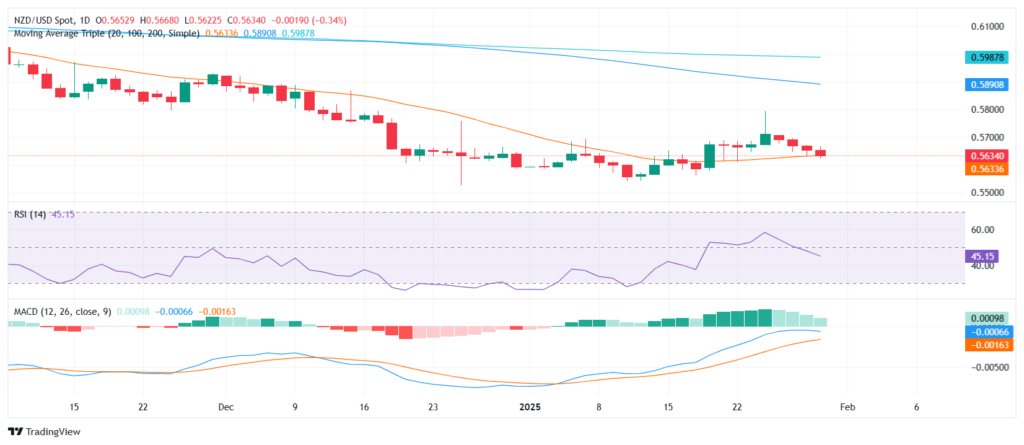The New Zealand dollar weakened against the U.S. dollar, extending its decline as the pair approached its 20-day simple moving average (SMA). With market sentiment turning cautious, traders are watching whether this technical level will provide support or signal further downside for NZD/USD.
The pair’s recent struggles come amid broad dollar strength, as investors remain focused on Federal Reserve policy expectations and upcoming U.S. economic data. A resilient U.S. labor market and persistent inflation concerns have kept the greenback well-supported, limiting the kiwi’s upside potential despite stable domestic conditions.

Meanwhile, the Reserve Bank of New Zealand (RBNZ) has maintained a hawkish stance, but the impact on the New Zealand dollar has been muted. With the Fed’s higher-for-longer rate outlook, the policy gap between the RBNZ and Fed continues to influence the currency pair’s trajectory, keeping NZD/USD on the defensive.
Looking ahead, traders will monitor U.S. inflation data and New Zealand’s economic outlook for further direction. If the U.S. dollar continues to strengthen, NZD/USD could breach its 20-day SMA, signaling additional losses. Conversely, a shift in risk sentiment or softer U.S. data could provide relief for the kiwi.
For now, the New Zealand dollar remains vulnerable, with technical and fundamental factors keeping pressure on NZD/USD. A decisive move below its 20-day SMA could reinforce bearish momentum, while a rebound may offer short-term stabilization.













